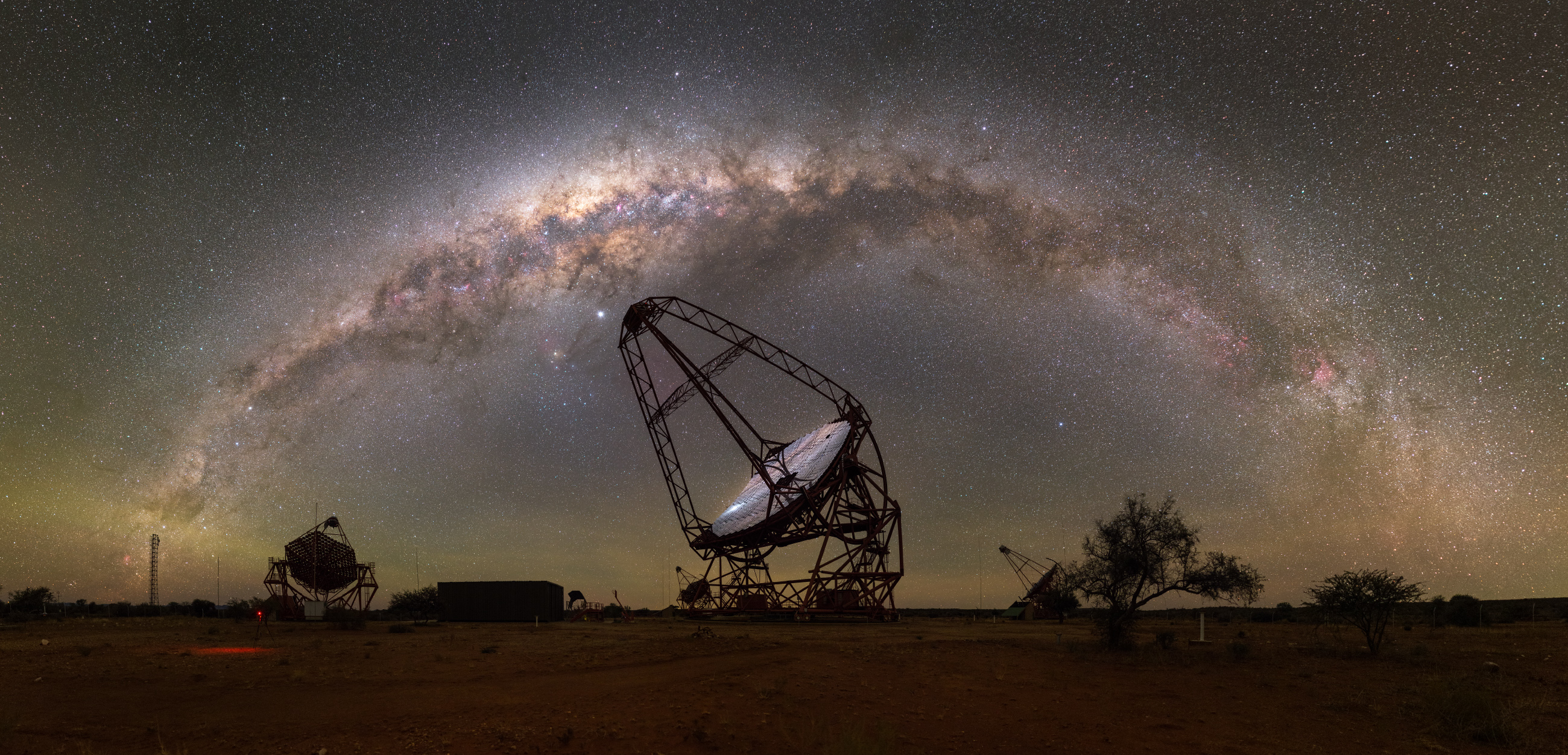
The H.E.S.S. Observatory has been featured on NASA's "Astronomy Picture of the Day" website. Every day, NASA showcases a different image or photograph of our fascinating universe, along with a brief explanation written by a professional astronomer.
On September 6, 2023, a short video dedicated to observations conducted at the H.E.S.S. Observatory was posted on the APOD website - link. The description provided below the video explains:
"They may look like modern mechanical dinosaurs, but they are enormous swiveling eyes that watch the sky. The High Energy Stereoscopic System (H.E.S.S.) Observatory is composed of four 12-meter reflecting-mirror telescopes surrounding a larger telescope housing a 28-meter mirror. They are designed to detect strange flickers of blue light -- Cherenkov radiation --emitted when charged particles move slightly faster than the speed of light in air. This light is emitted when a gamma ray from a distant source strikes a molecule in Earth's atmosphere and starts a charged-particle shower. H.E.S.S. is sensitive to some of the highest energy photons (TeV) crossing the universe. Operating since 2003 in Namibia, H.E.S.S. has searched for dark matter and has discovered over 50 sources emitting high energy radiation including supernova remnants and the centers of galaxies that contain supermassive black holes. Pictured in June, H.E.S.S. telescopes swivel and stare in time-lapse sequences shot in front of our Milky Way Galaxy and the Magellanic Clouds -- as the occasional Earth-orbiting satellite zips by."
Over 230 scientists from 41 institutes in 15 different countries participate in H.E.S.S. research. The H.E.S.S. team includes researchers from five Polish institutions: the Nicolaus Copernicus Astronomical Center of the Polish Academy of Sciences in Warsaw, the Astronomical Observatory of Jagiellonian University in Krakow, the Henryk Niewodniczański Institute of Nuclear Physics in Krakow, the Astronomical Observatory of the University of Warsaw, and the Institute of Astronomy of Nicolaus Copernicus University in Toruń.
The Nicolaus Copernicus Astronomical Center of the Polish Academy of Sciences is the leader of the Polish Consortium for the H.E.S.S. Experiment, and it includes the following scientists involved in gamma-ray research: Prof. Włodek Kluźniak, Prof. Bronek Rudak, and Prof. Andrzej Zdziarski. Prof. Rafał Moderski serves as the national coordinator of the project and is a member of the H.E.S.S. Collaboration Board.
The participation of Polish scientists in the H.E.S.S. project has been financially supported through the Ministry of Education and Science's program "Support for the Participation of Polish Scientific Teams in International Research Infrastructure Projects" based on agreement No. 2021/WK/06.
Foto credit: Bastien Foucher & Sabine Gloaguen.






